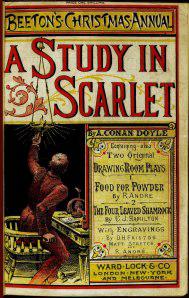Q: The setting is rural 1925. There are dark stains on trees, shrubs and leaves which my hero believes is blood. My questions are, how would he identify it as blood and how would he discriminate it from animal blood? What tests or experiments that existed in that era could he perform?
Frank James, Ste-Marthe-sur-le-Lac, Canada
A: The two steps needed to distinguish animal blood from human blood are: Determining if the stain or sample is indeed blood and then is it human of animal.
Testing liquids and stains to determine if they are blood is not new. For centuries, the microscope has been used to visually identify blood cells, which would prove that the substance is blood. But this required liquid blood and not the typical crime scene clotted or dried blood, neither of which contain identifiable cells. Several other tests appeared in the 1800s, including the hematin test, developed by Polish scientist Ludwig Teichmann in 1853. This also required liquid blood since in this test the blood was mixed with acetic acid and salt crystals, heated, and then viewed under a microscope. The presence of the characteristic rhomboid crystals proved the sample was blood. This test is similar to the present day Teichmann and Takayama Tests.
The guaiacum test, developed in 1862 by Dutch scientist Izaak Van Deen, used the guaiac resin of a West Indian shrub and is the precursor of the present day phenolphthalein test (see below). In the guaiacum test, the blood sample was mixed with hydrogen peroxide and guaiacum and, if it was indeed blood, a blue color would appear. In 1887, a similar test was used by Sherlock Holmes to identify a bloodstain in the very first Holmes story, A Study in Scarlet.

In 1900, Paul Uhlenhuth developed a serum that reacted only to human blood, and not animal blood. This is an antigen-antibody reaction and is similar to how this testing is done today. The sample would be dissolved in salt water and then the serum would be added. Human blood proteins would then react with the serum, producing complexes that would precipitate (fallout of solution) and darken the serum. Animal blood would cause no such reaction so if a reaction occurred the tester would know that the blood was indeed human and if not it must be animal blood or some other substance. Now we have serums that react with a just about any species of animal you can name and with these lab techs can determine the specific type of animal that shed the blood.
So your character could use guaiacum to determine that the sample was blood and then employ Uhlenhuth’s serum to determine if it was human or not.
